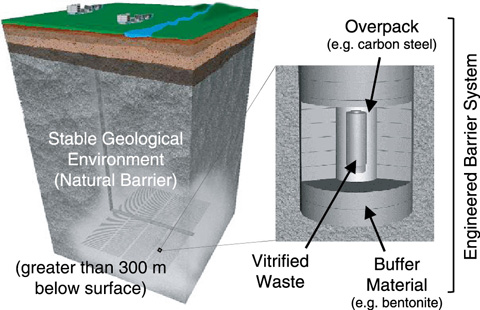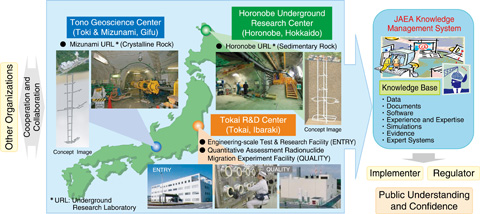
Fig.3-1 Basic concept of geological disposal of high-level radioactive waste (HLW) in Japan

Fig.3-2 JAEA’s R&D activities
Geological disposal is aimed at isolating high-level radioactive waste (HLW), which is produced during nuclear power generation, from human environments over long periods of time. This is a critical issue that the present generation must take responsibility for dealing with and that remains crucial irrespective of the revision of national nuclear energy policy. In Japan, spent fuel from power reactors is reprocessed to extract reusable uranium and plutonium for power generation purposes. The liquids separated from the spent fuel during chemical reprocessing are solidified into a stable glass form. In the Japanese concept, vitrified wastes are encapsulated in a thick steel overpack, which is surrounded by highly compacted bentonite and then placed in a stable geological environment below 300 m (Fig.3-1). Similarly, part of the low-level radioactive waste (LLW) will also be disposed of in the geological environment.
Geological disposal of HLW tends to be a long-term project, lasting over 100 years. The project begins with site selection and continues to repository construction and operation, which will be followed in turn by post-closure monitoring. Thus, it is essential to proceed with the project efficiently, treating it as a national responsibility, by continuously reinforcing the technical base and, more importantly, enhancing public confidence. To this end, we have made, and will continue to make, steady progress in research and development (R&D) in various fields, such as geoscientific research, engineering technology, and safety assessment, to improve the technology used for and the reliability of geological disposal in Japan. Our efforts are also focused on promoting public understanding through the dissemination of relevant information and on opening our R&D facilities to the public.
A particular focus of our R&D at present is on projects at two underground research laboratories (URLs)-one at Mizunami for research on crystalline rocks and the other at Horonobe for research on sedimentary formations (Fig.3-2) -with the primary aim of developing a sound technical basis for the implementation and the safety regulations. In March 2012, shaft excavation reached a depth of 500 m at Mizunami and 350 m at Horonobe, and some research galleries were made available for use. Multidisciplinary investigations are ongoing as the reliability of various investigation techniques must be tested and confirmed before site characterization begins in earnest. Underground tunnels serve as a place for the public to experience deep geological environments firsthand and appreciate our R&D activities. In addition, studies of, for example, tectonics and volcanic and faulting activity have been in progress in order to evaluate the long-term stability of geological environments in Japan.
In parallel with such geoscientific research, we are conducting an extensive study to assess the performance of multibarrier systems, engineered barrier systems, and long-term chemical and migration behavior of radionuclides at Tokai in order to improve geological disposal technology. These studies involve the use of geological environment data obtained at both URLs. In 2011, particular focus was placed on the developing of sorption and diffusion databases for cement and soil to contribute to the analysis of radionuclide migration at the surface in relation to the accident at the Tokyo Electric Power Company, Incorporated Fukushima Daiichi Nuclear Power Station. The prototype knowledge management system that was developed in 2009 has been under improvement in order to systematically provide multiple lines of evidence and R&D results.